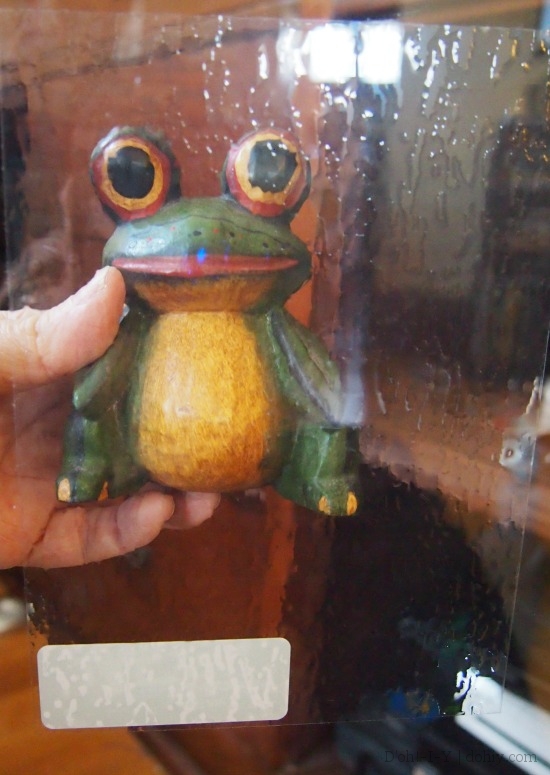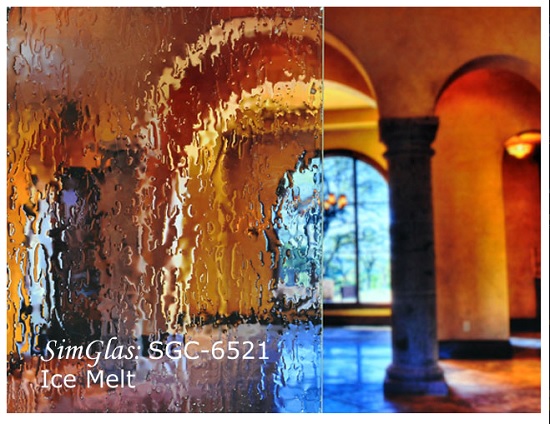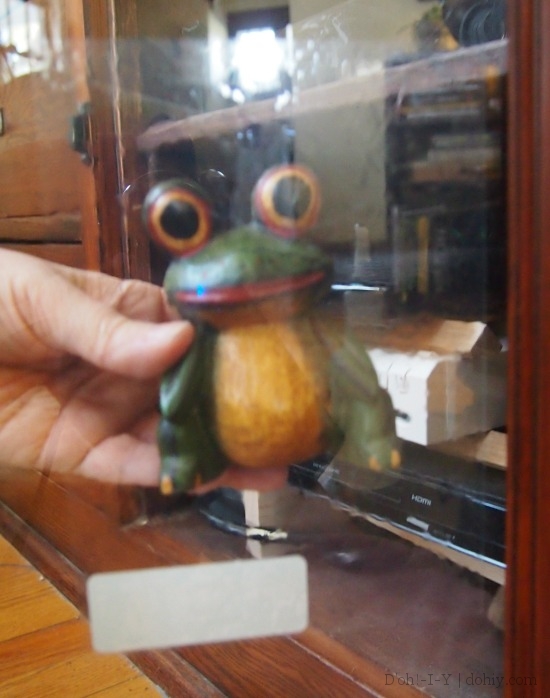Ice to see you.
– McBain
When we added the built-in cabinetry to the living room, we used glass doors for two reasons:
- It breaks up the expanse of wood.
- It allows remote access to the electronics.
The vintage cabinet unit we used had lost its original doors, so we ordered glass-ready doors. Since we often have other people’s kids running around here, I wanted to use tempered glass (UK: toughened glass). Tempered glass is stronger than regular window glass, and it breaks into rounded pieces rather than into jaggedy glass knives, like the one that killed the bad guy in Ghost. Do you remember the bad guy in that film? Or just the pottery-related snuggles?
It turns out that building codes mandate use of tempered glass in some situations. Codes vary, but you generally need safety glass for:
- Any glass in a bathroom.
- Glass within a yard of a door.
- Huge tracts of glass (square yard and up).
- Glass installed within 18 inches of the floor.
These all make perfect sense (except tempered glass would have spared the Ghost villain). Our cabinet doors fall firmly into the “floor” category. We ordered our surprisingly affordable glass from a local fabricator (the whole order was under $50), but there are also online places for ordering or for learning about corners and finishes you might want.
Ok, but new glass looks NEW, and I thought it might be nice for it to look a little wavy and antique for two reasons:
- This is an old house.
- Wavy-looking glass allows access to the electronics while slightly obscuring their electronic-iness.
I’ve used misting spray on some windows (the neighbors’ stair landing is not improved by views of us watching re-runs in PJs), but I wanted a real glass look here. I found numerous window film options, but most are patterned or opaque.

Nice, but it doesn’t look like old glass (via).
The internet eventually led me to Decorative Films. Or maybe it’s called Solyx, or Decorative Films sells Solyx films — the site is a little confusing. Anyway, “the company” makes patterned and colored glass films, but it also offers “SimGlas” — clear, textured window films. I ordered four samples (up to five free with $2.95 shipping) to try.
SimGlas uses adhesive rather than static cling like some films, but the adhesive is water-activated instead of stick-to-everything-NOW. The trickiest bit was freeing a corner to peel the backing.
Application kits are available, but a spray bottle, some rags, and a credit card are plenty for the samples. Spray the film and the glass, stick the sample on, and use the edge of the credit card to smooth out bubbles. I put all four on the same door in a haphazard fashion.
I photographed the individual samples, but poorly — they are not easy to capture. Happily, the shots I took featuring the cheerful toad were the best of a bad lot. I also included product shots off the Decorative Films site.

Surprise: Chipzite
In my photos (and in real life), the diffusing effect is less pronounced than seen in the company’s images. That’s good if your goal is a glass-like look! Whatever you are looking for, though, definitely order samples first — the actual material is almost $30/foot (by four feet wide), which could get pricey if you have a large area to cover.
I left the samples on the door for a month. My favorite was the most subtle: Antique Glass. It did a good job of replicating the look of old glass. The depth of texture shown on the site was not as prominent in person — the film was virtually invisible, with the film lending a slight wavy effect.
The Antique Glass film was what I thought I wanted for the cabinets, and it would be a good possibility for that or for windows. Ultimately, though, I decided against glass film for two reasons:
- The best film for a believable look did not obscure electronic-iness at all.
- I came to terms with the fact that it’s 2015, and we own electronics.
Removal instructions recommend using water to loosen the film, but once I pried up a corner, the samples pulled away neatly and easily.
Although I didn’t choose films here, I was impressed by the effect and how easily they went on and off. If you want to achieve the old-glass look, try some samples and stop back to tell us what you think. If you know of another way to fake old glass, please comment!














